LOOKback: Stories of our streets
Much has changed in Fountain Street in the past few centuries, as Rob Batiste reveals...
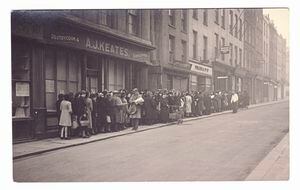
BEFORE we get to the detail, yes, there was a fountain.
There had to be, didn’t there?
You won’t find any pictures and there appears no indication as to exactly where it stood, how big it was and how splendidly it spouted. But there was one, just east of the Town Church in the period when the parish church was hemmed in on all sides and access to the Bordage was through a dark, narrow street where it was almost possible to touch hands across the upper floors of ramshackle town housing.
It was 1887 and the local papers – The Comet and The Star – were running stories on the proposed vestry for the Town Church, when the subject of a fountain cropped up via mention of drains brickwork underground between the then Maritime Inn and the south-east portion of the place of worship.
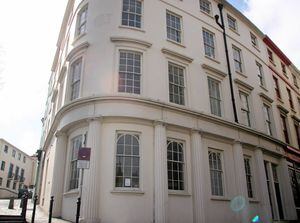
It was, it turns out, nothing to do with drains but, instead, the base of a large hole constituting the receptacle for a pipe formerly conveying water to the fountain erected east of the church and apparently fed by water from a reservoir situated in Havelet Road.
This, the late 1800s, was another time of huge change for this area of Town and the original Fountain Street where the Maritime Inn and other ancient buildings pre-dating the markets gave little room to manoeuvre.
You couldn’t swing a cat in the early years of the 19th century – the street being a remarkably narrow 8ft wide at one end – and the States decided they should so something about it.
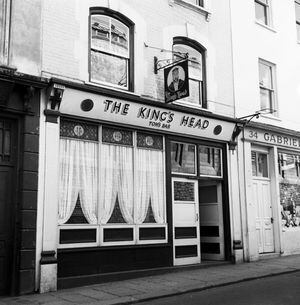
They had had enough of carts having to queue to progress from the Bordage to the front, or vice versa, so between 1827 and 1829 it was operation rebuild.
Down came 23 houses on each side of the street and in no time Fountain Street was a relatively glorious 30ft wide.
In time the fish market would be built and there was much discussion over whether more housing should be bought and replaced and the bottom end opened by the removal of the old Maritime Inn.
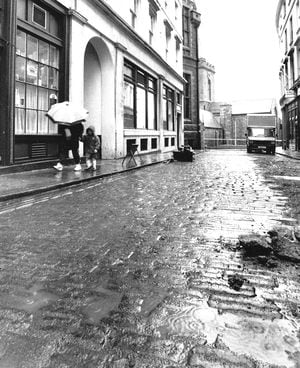
Those against the project pointed to exposing the ‘Fountaineers’ to boisterous easterlies whipping up from the sea.
Nevertheless, the vote to buy the inn was carried comfortably. Yet, for reasons unexplained, while they talked long and hard about the necessity of razing the old inn to the ground, more than 20 years later it was still there and only in 1915 did it come down after having been conveniently gutted by fire some time earlier.
By then, Fountain Street had moved on apace, largely due to more old housing – which was costing the States a good deal of money – going to make way for the markets.
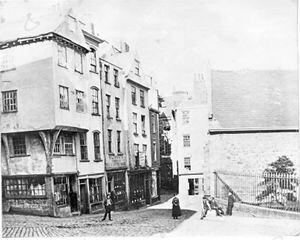
It seems the Victorian marketing people in the States had not wisely utilised their property in the road and not let as ‘advantageously as was expected’, wrote The Star 150 years ago.
Rents had been dropped to find tenants and the cost of repairs was always increasing.
Why, discussed the States, should they not opt to get rid of much of this old housing and use the money raised in reducing the debt they had on Fountain Street?
On the plus side, the States had a buyer for Nos 12, 14, 16, 18 and 20 on the southern side of the street and one of the purchasers was Everett Clothier, a provision merchant according to a census of the period.
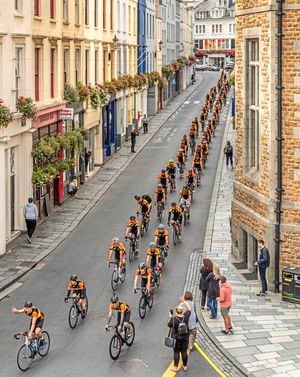
All the while, Fountain Street was constantly cropping up in the newspapers with the sad tale of the latest incapacitated drunk, unsurprising given the number of pubs in the area.
In Victorian times you could stagger between Bater’s Hotel at No. 20, the Brighton at No. 26, the Bell, the Blue Bell, the Fountain Hotel, the Market Arms, the Labour In Vain, Hotel Francais, French Cutter Inn, the Hurry Inn, the States Hotel and the Dolphin.
Throw in the fact that there were as many, if not more, up Cornet Street, it is no wonder that many a man – and occasional woman – lost the use of their legs and senses.
By the mid 20th century all but the Market Arms had gone and its only competitors on this short stretch were the Wellington, almost opposite, and The King’s Head at No. 32, which poured its final pint in 1962.
Despite its scrubby history, this series’ old architectural friend, C. E. B. Brett, spoke highly of Fountain Street, much of it designed by the accomplished and much-hailed John Wilson.
‘Both sides of this excellent street were very deliberately designed as part of the same conception of the old fish market or “Les Arcades”,’ he wrote in the late 1970s.
He liked that on the south (old Gabriel’s) side each shop-front entrance was framed in fat fluted Doric columns.
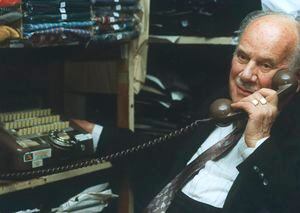
Such designs don’t mean much to me and neither did they to the former Rediffusion business which ‘disgracefully’ got rid of them and substituted a recessed full-width plate-glass shop front.
He also much liked the building that impressively sits at the foot of the street, once the original States Offices, then Barclays Bank for many years and now Cherry Godfrey.
For a large part of the late 20th century Fountain Street became synonymous with super-drapers Gabriel’s, which seemed to cater for everything that could be worn.
During the earlier part of the 20th century it was C. Pommier of charcuterie renown, pastries business A. J. Keates and J. Cumber, the chemist.
Interestingly, No. 6 was a fish and chip shop 80 years ago, and still is now under the title Chip Inn.
But, arguably, no business existed longer in the street than Cumber’s, the chemist and optician, which was there alongside Clothier when the street was transformed in those late Victorian times.
Henry Joseph Cumber was born in 1828 and his son of the same christian name came along in 1857. They were both chemists in Fountain Street and a third Henry Cumber is thought to have followed into the line while also establishing himself as one of the island’s finest immediate post-First World War footballers.
The fact that he played and won much with Northerners may have had much to do with him marrying a daughter of William Bird, the renowned one-time club president.
Cumber’s business colleagues up the street comprised the likes of ironmonger J. W. (John) de Jersey, who operated out of Nos 7 and 9 on the market side – even numbers on the southern side, odd on the northern.
Denis de la Rue ran his cutlery store at No. 36 and Sussex-born Alf Steadman operated his popular cafe at No.12.
Steadman’s was more than a cafe, it was a meeting place. It was where the Guernsey Football Association was formed and it was where the likes of the Guernsey Swimming Club held their meetings.
The Steadman family – all seven of them – worked and lived out of Nos. 12 and 14.
Go back a decade and ahead of the street’s transformation from housing to business, sailor Fred Woolnough lived at No. 4, baker Thomas Cluett next door at No. 6.
Every morning he could peer out of his front windows and, to the right, see the rear of old Judith Moullin’s Maritime Inn next to the Town Church.
Up the road at No. 30, popular stone and marble mason William Newbury lived at No. 30 with his family, victualler Israel Elliott at 32 along with nine others, builder Peter Robin at No. 34, one down from the ironmonger de la Rue.
Jersey-born grocer John Goesle lived at No. 14 and can shop proprietor Richard Cole at No. 12.
Across the road at No. 13, Margaret Cohu ran a lodging home which took in 10.
The censuses of the late 19th century highlight those who lived among the odd numbers, of which there are now very, very few, the spaces where once stood 13 to 19, for instance, having been replaced by the market.
Then, of course, there was Everett Clothier, who had keenly bought into the street when the States was eager to sell.
He operated out of 18, four buildings down from the French-born publican Charles Giquel who ran the London Hotel at No. 26.
The Fountain Street properties continued as far as No. 44, by which time it was basically in the Bordage that would start with the old The Star offices at Nos. 2 to 6.
Yet, all these men, all these businesses, can’t hold a candle to Ben Gabriel when it comes to commitment to the street.
For decades, his drapers and outfitters shops were the big draw to the street. It was where most Guernsey mothers went to clothe their children at very reasonable prices.
He was so popular he deserved a statue.
Additional research by Terry Dowinton and the Priaulx Library.
Fountain Street - 80 years ago
These were the businesses that operated in the street in 1940:
Western side from Town Church
7/9 W. and H. de la Rue, ironmongers
11 K. K. Weysom, licensed victualler
12 Thomas Wise, grocer
15 H. Le Gallez, newsagent
17 R. Smith, grocer
Eastern side
2 Barclays bank, Income tax office and A. Topley
4 J. Cumber, chemist
6 Fish and Chip Shop restaurant
8 J. Martel, the Hurry Inn
10 C. W. Lowe, baker
12 W. Renouf, draper
14 G. F. Faber, wine stores
16 H. Summers restaurant
20 A. J. Keates, pastrycook
22 Mrs Haysom, jewellers
22 Phillips & Co Ltd, tobacconnists
26 Brighton Hotel
28 C. Pommier, charcuterie
30 H. Carrington, draper
32 P. Greville, licensed victualler
36 Domaille & Sons, toys
38 Fish restaurant
40 McMillan's The Groceteria
42 Miss Gardner fancy stores
44 Hubert & Co, seedsmen





